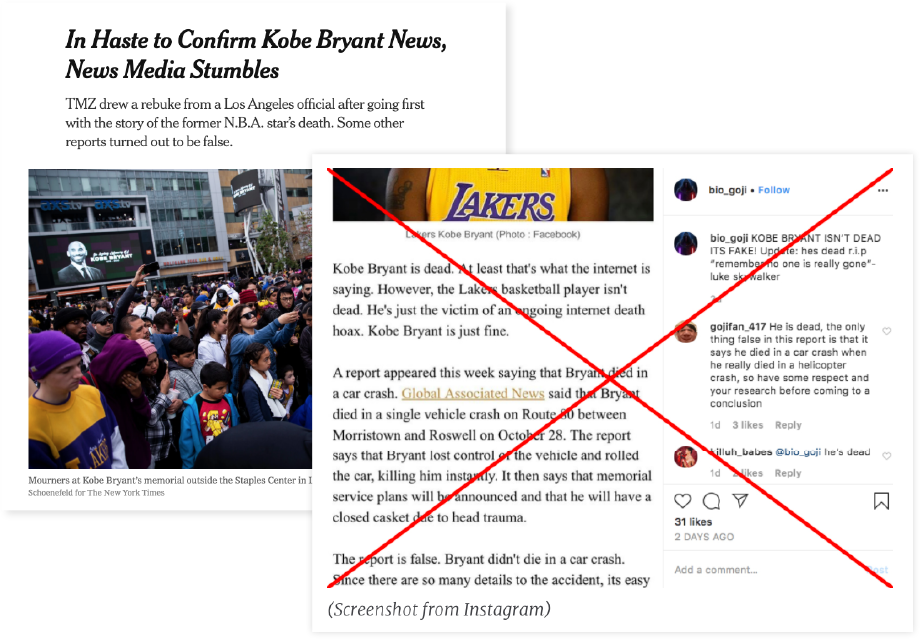Slow news
Every time major breaking news occurs, misinformation spreads like wildfire. You can absolutely depend on it, because rumors and speculation fill a vacuum before confirmed information reaches the public.
It’s not just in social media that this occurs. When Kobe Bryant and one
of his daughters were killed in a helicopter crash in early 2020, a blizzard of misinformation erupted in social and traditional media. And each new development in the COVID-19 pandemic has been fertile ground, like so many other topics, for rumors and lies.

So we’d like to ask you to consider a “slow news” approach, both as media consumers and creators.
What’s slow news? It’s the idea that you should take a breath before believing — and especially before sharing — breaking news (and a lot of non-breaking news). Wait for confirmation from trustworthy sources. Understand that what we think we know right now can be, and often is, either incorrect or, almost always, incomplete.
Slow news: The fundamental idea that journalists should not rush to publish or broadcast before they know their story is true, and that their audiences should take a breath before leaping to believe anything they see.
Speculation has passed for journalism in all media eras. Every commercial plane crash, for example, is followed by days of brazen guessing by so-called experts who, to be sure, are occasionally proved correct after months of actual investigation by the real experts. Sometimes we never know the truth.
We know from experience that many journalists will always prefer speed to accuracy, so it’s basically up to us — as consumers — to adopt slow news. Yes, this challenges human nature at times. But if we don’t ask ourselves to be more cautious, we’re asking to be misled.
